#五代
Explore tagged Tumblr posts
Text


One of the first Hanfu outfits I bought was this style (I still have it). At the time I thought it was representative of the Tang Dynasty, but later found out that it's more likely a style from the Five Dynasties (right after the Tang Dynasty). Some historians have also speculated that the one large flower on the top of the head is more of a Song Dynasty style rather than Tang.
It's a good reminder that all of these speculations about historical styles are based on what we can actually dig up, but obviously tombs are limited. Maybe tomorrow we'll find a new tomb with new artefacts that'll throw everything we think today upside-down xD




#hanfu#汉服#china#中国#chinese hanfu#culture#history#fashion#clothing#historical clothing#唐朝#五代#宋朝#tang dynasty#five dynasties#song dynasty#晚唐#late tang
377 notes
·
View notes
Text
“五代十国”诗词赏析
虞美人•春花秋月何时了 李煜 春花秋月何时了?往事知多少。小楼昨夜又东风,故国不堪回首月明中。雕栏玉砌应犹在,只是朱颜改。问君能有几多愁?恰似一江春水向东流。 译文:这年的时光什么时��才能结束,往事知道有多少!昨夜小楼上又吹来了春风,在这皓月当空的夜晚怎能忍受得了回忆故国的伤痛。精雕细刻的栏杆、玉石砌成的台阶应该都还在,只是所怀念的人已衰老。要问我心中有多少哀愁,就像那不尽的春江之水滚滚东流。 赏析: …
View On WordPress
0 notes
Text
[Hanfu · 漢服] China Five Dynasties And Ten Kingdoms Period--Min Kingdom (闽国) Traditional Clothing Hanfu Photoshoots









【Historical Artifacts Reference 】:
Based On Five Dynasties and Ten Kingdoms Period: Female Figures from the Tomb of the Empress of Min Kingdom (闽国)


🌸 Four-Butterfly Silver Hairpin (Buyao)

Unearthed from the Tomb of Lady Tang, Southern Tang, Five Dynasties Period
This exquisite silver hair ornament was excavated from the Tomb of Lady Tang located in Daxinggong, Nanjing, Jiangsu Province, dating back to the 10th century CE, during the Southern Tang regime of the Five Dynasties and Ten Kingdoms period.The butterfly ornaments are suspended by fine silver chains, swaying as the wearer walks—hence the name “buyao” (步摇, literally "step-shake")
🌸 Gold-Inlaid Jade Hairpin (Buyao)

Unearthed from the Tomb of Lady Tang, Southern Tang, Five Dynasties Period
This elegant gold-inlaid jade hair ornament was unearthed from the tomb of Lady Tang in Daxinggong, Nanjing, Jiangsu Province, dating to the Southern Tang state (10th century CE) during the Five Dynasties and Ten Kingdoms period.
Court Ladies Wearing Flowered Headdresses (《簪花仕女图》)
Although the Court Ladies Wearing Flowered Headdresses (《簪花仕女图》) is often mistakenly attributed to the Tang dynasty, art historical evidence indicates it was actually created during the late Tang to Five Dynasties and Ten Kingdoms period (9th–10th century CE).
The painting’s stylistic elements—such as the full-faced court ladies, elaborate hairstyles, floral hairpins (zanhua), and luxurious clothing—align closely with depictions of Southern aristocratic women in the Five Dynasties period, particularly those seen in Southern Tang tomb artifacts. These features reflect the refined elegance and cultural taste of that transitional era, rather than the earlier Tang high period.





🖼️Auction items suspected to be paintings from the Five Dynasties period


Although sometimes associated with Ming dynasty art, many Chinese scholars believe this painting better reflects the style of the Five Dynasties and Ten Kingdoms period. The figure’s proportions, attire, and Daoist elements resemble those seen in late Tang to Southern Tang artworks.
However, the painting’s exact date remains uncertain, and there is ongoing debate due to inconsistent seals and mixed stylistic features.
------------------
Photo :@大喵来了
Model:@是小芥末w
Stylist:@赵常月
Xiaohongshu app:https://www.xiaohongshu.com/discovery/item/6834368f00000000230013dc?
------------------
#chinese hanfu#five dynasties and ten kingdoms period#hanfu#hanfu accessories#hanfu_challenge#china#chinese traditional clothing#chinese#五代十国#AncientFashionStudy#HanfuHistory#簪花仕女图#中国传统服饰
87 notes
·
View notes
Text

#official art#第五���格#game collab#identity v#shiguang daili ren#shiguangdailiren#shiguang dai li ren#shiguang#link click yingdu#yingdu#link click#時光代理人#cheng xiaoshi#lu guang#qiao ling#liu xiao#li tianchen
85 notes
·
View notes
Text

80 notes
·
View notes
Text
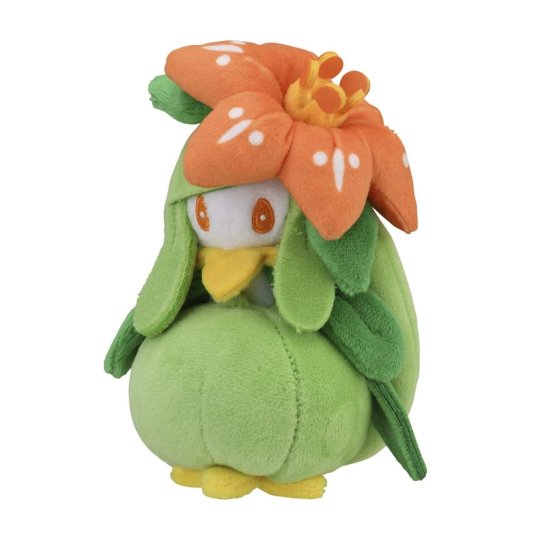
Lilligant Sitting Cuties Plush
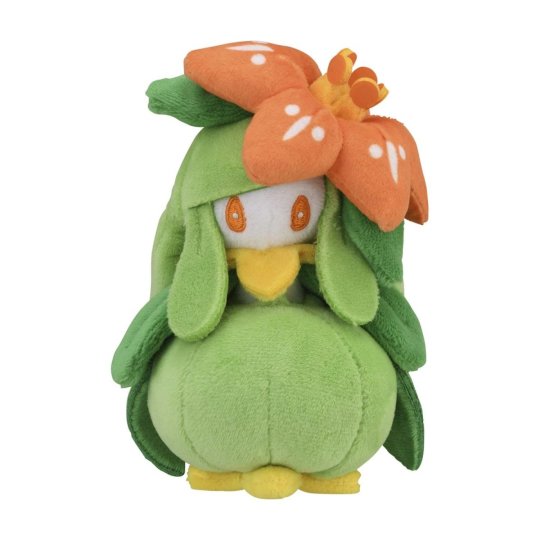
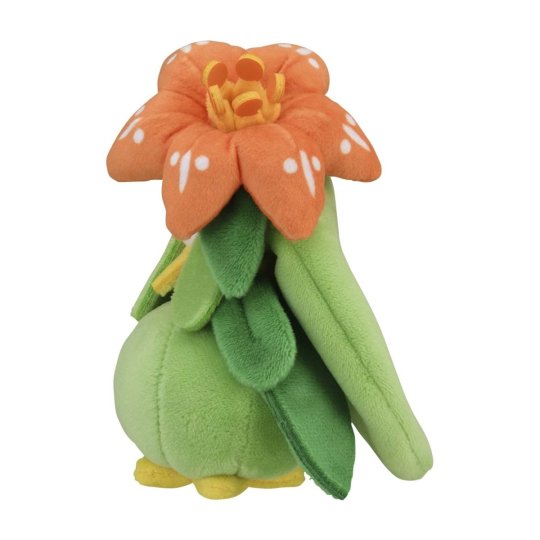
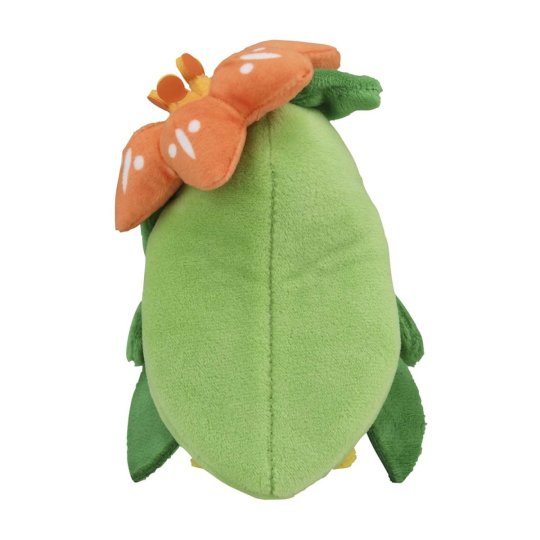
25 notes
·
View notes
Text
刺青 和彫り 古典

歪んだものほど美しい 2015年11月4日 · ·
ブリ庄さん
背:迦陵頻伽(筋:彫五郎 ぼかし:初代彫文)
腹:雷神(初代彫文)
「原色日本刺青大鑑」 芳賀書店・刊 (1973年)より
#かいな#腹#背#japanese traditional art#刺青#和彫り#japanese tattoo#和彫り古典#刺青古典#ふんどし#褌#六尺褌#fundoshi#loincloth#彫五郎#初代彫文
22 notes
·
View notes
Text
Title: 泥翠代理人 (Agent of Mud)
Arrangement: 今道
Vocals: やっさん, 今道, & なずか
Album: 泥翠代理人
Circle: 五壁坂
Original: The Oni on the Perpetual Mountain
#touhou#touhou project#touhou music#the oni on the perpetual mountain#suika ibuki#五壁坂#unfinished dream of all living ghost#泥翠代理人#今道#なずか#やっさん
22 notes
·
View notes
Text
Perhaps centuries later this Buddha will be similar to the Great Buddha of Kamakura,historians will debate when it was built and who built it.
#Goemon Ishikawa XIII#十三代目石川五ェ門#Lupin III#ルパン三世#great sculptor whose fame was overshadowed by his swordsmanship#Great Buddha of Kamakura#鎌倉大仏#April 9th is the Daibutsu Day in Japan#The exact builder and reason for the construction of the Great Buddha of Kamakura remains unknown#although it is one of the most famous Great Buddhas#Also the legend of “Seven Wonders of the Great Buddha” is spread in the area around Hōkō-ji#one of the seven is about the hiding place of Goemon Ishikawa
19 notes
·
View notes
Photo
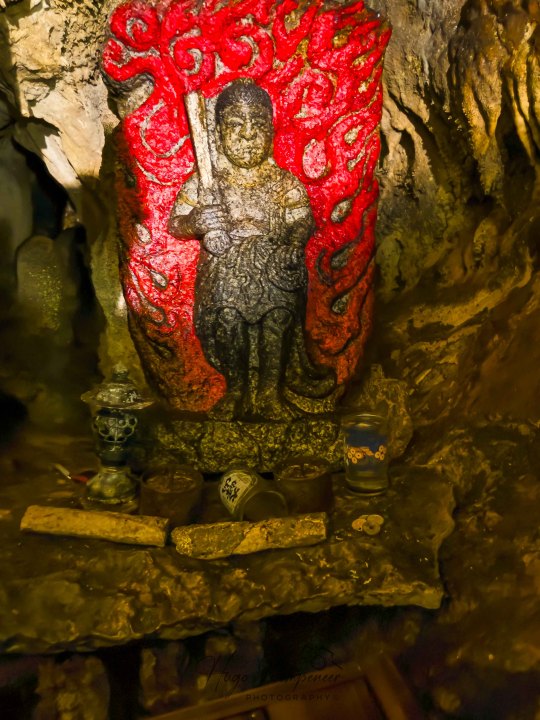
Fantastic sights await deep inside this cave that goes back over 80 meters. Stalactites, stone columns, and stalagmites glitter with a soft light. The stalactites suspended from the ceiling range from 20-30 centimetres to 3 or 4 meters. The Great Golden Pillar is 8 meters tall. The cave is named after the man who discovered it, Goyomatsu Akai.
#Goyomatsu Akai#Goyomatsu Limestone Cave#Goyomatsu Limestone Cave Monorail#Japan#Nara#travel#かじかの#かじかの滝 Goyomatsu Limestone Cave#ごろごろ水#五代松モノレール Kajika Falls#五代松鍾乳洞 Gorogoro spring water
21 notes
·
View notes
Text
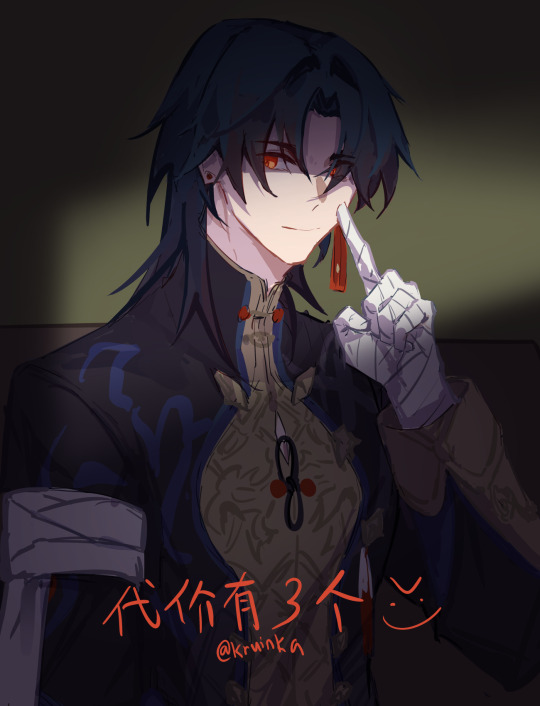
im quoting this guy like zhonglis osmanthus wine line
#kart 🐮emoji#hsr blade#honkai star rail#honkai star rail fanart#hsr fanart#hsr#this was meant to be crack but he turned out too serious so i had to scribble over it to make it silly#its the. there were five ppl three have to pay a price line#人有五🖐️名代价有三👌个😠😠#你不是❌其中之一☝️#daily blade
148 notes
·
View notes
Text
The Legacy
The sun hung low in the sky, casting long, solemn shadows across the packed courtyard. It was the first memory Tsunade could truly grasp, something tangible in her young mind that would never leave her. There had been other memories before this, fragments of laughter, the warmth of strong arms lifting her high, the deep rumble of a voice that could fill the room with joy. But those were fleeting—snippets of something almost too perfect to remember fully.
Today was different. Today, at nearly four years old, Tsunade stood at the front of a sea of faces, her tiny form dwarfed by the towering presence of the clan heads, shinobi elites, and her own family. This was not the same warmth she remembered, not the private smiles exchanged behind closed doors in their family estate. This was cold. This was public. A funeral for the Shodai Hokage.
Not for her grandfather.
No, the mourning for her grandfather had already happened, hidden away from the prying eyes of the world. She had been allowed to cry for him in the privacy of her clan’s home, tucked between her grandmother’s arms, clutching her grandfather’s familiar robes that still smelled faintly of him. But here, in front of all these people, she was not mourning her grandfather—she was witnessing the farewell of the God of Shinobi, the Shodai Hokage, Senju Hashirama. And the weight of it felt unbearable.
She stood between her grandmother and her grand-uncle, her tiny fists clenched at her sides. The adults flanked her, pillars of strength that she couldn’t yet understand, couldn’t yet mimic. She stared at the large portrait at the front, a painting of a man who seemed both familiar and impossibly distant. Her grandfather, smiling as he always had, his warmth radiating from the canvas. But here, amidst the crowd, it was as though he was a stranger.
So many people. She marveled at how vast the gathering was. Clans from every corner of the village, leaders of nations, shinobi whose names she had heard whispered in reverence. All of them here for him, for the Hokage.
Is this what it means to be Hokage? The idea struck her, gnawing at the edges of her young mind. To be surrounded by all these people, yet so alone in death? The thought terrified her, though she couldn’t yet articulate why.
As she stood there, words from long ago whispered at the edges of her memory. She could almost feel the weight of her grandfather’s large hands as they rested on her shoulders, could almost hear his deep, comforting voice telling her that one day, she could be Hokage. That she had the strength, the will, the bloodline to lead. Back then, those words had filled her with pride. Back then, sitting in his lap, nothing had seemed impossible. She had believed him.
But now, standing there, staring at the sea of mourners, she realized with a sickening certainty that she didn’t want it. Not any of it.
Her small fists clenched tighter, nails biting into her palms. If being Hokage was so special, then why was he dead? If being Hokage was supposed to be such an honor, why had it stolen him away from her? Why couldn't she still run to him when the day ended, climb into his bed, and wrap herself in the warmth of his laughter? Why couldn’t she hear his voice anymore?
Being Hokage was nothing special. If it were, he’d still be here. He’d still be laughing. He’d still be alive.
She refused to cry. Her throat burned with unshed tears, her vision blurred slightly as her eyes stung with the effort of holding them back. Crying would be admitting defeat, and she wasn’t ready to surrender to this grief. Not here. Not in front of all these strangers who mourned the Hokage, but didn’t understand what she had lost.
And so, she stood there, fists trembling at her sides, as she took her first bitter taste of what the future held for her—a future filled with expectations, with responsibilities she hadn’t asked for. A life as a kunoichi, as a Senju, as someone who would always be compared to the man in that portrait. A legacy she would never truly live up to, a burden placed on her tiny shoulders before she even knew what it meant to carry it.
When the time came, she bowed. It was expected of her, a ritual she barely understood but performed with the grace instilled in her from birth. One final bow, her body bending stiffly as the crowd remained hushed. The green crystal around her neck—a new addition to her small figure, gifted to her after his passing—swayed with the motion, catching the sunlight as she straightened.
The necklace was heavy against her chest, its weight a reminder of the man she had lost. To the world, he had been a god, but to her… to her, he had simply been 'ojii-san'.
And now, both were gone.
#➤ D r a b b l e s ┊ ❛ In a blatant mind my thoughts have entwined ❜#Senju Hashirama - Shodai Hokage || 初代火影 - God of Shinobi#Senju Tsunade - Godaime Hokage || 五代目火影 - Konoha no Namekuji (Konoha's Slug Princess)#Senju Hashirama#Senju Tsunade#Hashirama#Tsunade#drabble
14 notes
·
View notes
Text
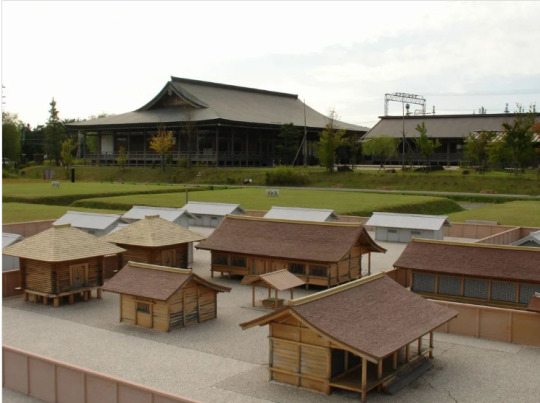
Sean bienvenidos japonistaarqueológicos a una nueva entrega de arqueológica japonesa dicho esto pónganse cómodos que empezamos. En esta ocasión, nos trasladamos a las ruinas de Saigu que están localizadas en la prefectura de Mie además es un sitio histórico nacional en Meiwa-cho, en el cual vivió Saio, la princesa que sirvió a Ise Jingu en lugar del emperador. - Esto lo sabemos gracias a los restos arqueológicos se, cree que se construyó entre el período Nara tardío y el período Heian temprano, se componen de cuatro edificios. - Estén atentos ya que les iré informando de todo lo que se vaya sabiendo,¿ Conocían este lugar? Espero que os haya gustado y nos vemos el día 22 nuevamente, os deseo un cordial saludo. - 日本の考古学の新しい記事へようこそ。 今回は、伊勢神宮に仕えた皇女・斎王が住んでいた、三重県明和町にある国の史跡「斎宮跡」に移動しました。 - 考古学的遺跡のおかげで、奈良時代後期から平安時代初期に建てられたと信じられており、4つの建物で構成されています。 - わかっていることはすべてお知らせしますので、お楽しみに、このサイトをご存知でしたか? 気に入っていただけて、22日にまたお会いできることを願っています。 - Welcome japonistasarqueológicos to a new installment of Japanese archeology, having said that, make yourself comfortable, we're starting. This time, we moved to the Saigu Ruins, which is located in Mie Prefecture and is a national historic site in Meiwa-cho, where Saio, the princess who served Ise Jingu instead of the emperor, lived. - We know this thanks to the archaeological remains, I know, it is believed that it was built between the late Nara period and the early Heian period, it is made up of four buildings. - Stay tuned, since I will inform you of everything that is known, did you know this site? I hope you liked it and see you again on the 22nd, I wish you a cordial greeting.
#Japan#BambooPalace#MiePrefecture#IseJingu.#Asukaperiod#NorthandSouthmorningperiod#Meiwacity#History#Archeology#五木宮#斎宮跡#伊勢神宮#日本#竹宮#三重県#伊勢神宮 。#飛鳥時代#南北朝時代#明和市#歴史#考古学#奈良時代後期#平安時代初期#ユネスコ#EarlyHeianperiod#UNESCO
24 notes
·
View notes
Text
[Cdrama Hanfu]𝗖𝗵𝗶𝗻𝗲𝘀𝗲 𝗙𝗶𝘃𝗲 𝗗𝘆𝗻𝗮𝘀𝘁𝗶𝗲𝘀-𝗦𝗼𝗻𝗴 𝗗𝘆𝗻𝗮𝘀𝘁𝘆 (𝟵𝟬𝟳–𝟭𝟮𝟳𝟵𝗔𝗗) 𝗛𝗲𝗮𝗱𝘄𝗲𝗮𝗿 & 𝗛𝗮𝗻𝗳𝘂 𝗶𝗻 𝗖𝗱𝗿𝗮𝗺𝗮【墨雨云间/𝗧𝗵𝗲 𝗗𝗼𝘂𝗯𝗹𝗲】







【Historical Reference Artifacts】
1.China Portrait of Qian Duo (10 March 852– 6 May 932), King Taizu of Wuyue (吳越太祖)<Ming Dynasty replica>

2.China Five Dynasties and Ten Kingdoms period: <White marble relief sculpture of Musician> Unearthed from the tomb of Wang Chuzhi, the governor of Yiwu Army during the Five Dynasties period


3.Chinese Five Dynasties Period and Ten Kingdoms Murals: Tomb of Feng Hui冯晖墓

【History about Chinese Traditional Headwear: Futou】
Futou (simplified Chinese: 幞头; traditional Chinese: 襆頭/幞頭; also pronounced and written as putou), also known as fu (幞) and toujin (頭巾),[1] was one of the most important forms of Chinese headwear in ancient China with a history of more than one thousand years. The futou first appeared in Northern Zhou under the reign of Emperor Wu where it became prevalent. It was also commonly worn in the Tang and Song dynasties. The futou was typically worn by government officials.The futou was originally turban-like headwear which was tied at the back of its wearer's head, with the two corners going to opposite directions and acting as decorations. From the Sui to the Ming dynasties, the futou evolved and was developed based on the fujin.The futou eventually came to assume a variety of shapes and styles.The shape of the futou worn by the government officials in the Song and Ming dynasties, the latter known as the wushamao (烏紗帽), was based on the futou of the Tang dynasty.
The Chinese futou was also introduced in both Korea Unified Silla and continued to be worn by government officials until the late Korea Joseon: 25 The futou with a jinzi (lining) was also introduced back in the Sogdian areas in Central Asia spreading to the Western regions through the Xinjiang region. The futou with jinzi was also introduced in Japan during the Japan Nara period through Prince Shōtaku.
Sui, Tang dynasty, and Five dynasties and ten kingdoms period
Prior to the Song dynasty, the futou was mostly made of black muslin. In the early Tang, the futou was a sijiaoruanjin (四腳軟巾; 'Four-feet soft scarf'),where all four ribbons were allowed to hang down after being tied. Later on, the early Tang dynasty minister, Ma Zhou, was the first person to use a square kerchief in order to tie a futou and was also the person who added a lining to shape his futou making it more beautiful.The lining which was added to the inside of the futou from the year 614 AD was called jinzi (巾子); the jinzi was used to make the futou look more straight and beautiful in terms of appearance. After being cut into the desired shape, the jinzi was painted black with lacquer and would then be covered by the futou. The jinzi was made with soft and light tung wood and with other materials such as bamboo strips, timbo, miscanthus, silk, and leather. It was also possible to line the futou with a mount-shaped item made out of paulownia (Chinese: 桐木为冠; pinyin: Tóngmù wéi guān; lit. 'paulownia crown') in the front. The step-by-step process to wear the futou with jinzi was to tie the hair up in a topknot, followed by covering the topknot with the jinzi as hard lining, then wrapping the head and the jinzi with a black, square-shaped piece of cloth, and finally tying the cloth in the desired style. The futou with jinzi then became the standard form of futou in the early Tang dynasty. A form of futou with jinzi was a kerchief with two corners attached with two ribbons in opposite directions of each other; the ribbons would then be tied at the back of the wearer's head, allowing the two back ribbons to hang down freely as a form of decoration.With time, the futou with jinzi was further developed, and a ribbon was attached to each corner of the turban to make it more decorative; two ribbons were tied on the top of the head while the back ribbons were tied and were allowed to hang down freely. The futou with jinzi could also have all four ribbons tied at the back of the head and allowed to hang down freely. The yingwangboyang (Chinese: 英王踣样), a futou with a big and forward top jinzi, was created by Emperor Zhongzong and became prevalent during his reign when he awarded this type of futou to his officials. During the reign of Emperor Xuanzong, the neiyang (Chinese: 内样), a futou with a small and round top jinzi became popular around the year 726 AD. Moreover, by adding wire or silk strings inside the added ribbons, the futou could take different shapes and styles depending on its wearer's liking. However, in the Tang dynasty, only the Emperors could use these hard ribbons; these hard ribbons would be bent upward.The Tang dynasties emperor wore a futou with two upturned tails until the Five dynasties period.The Tang dynasty emperors also wore the zhijiaofutou (Chinese: 直腳幞头; pinyin: zhíjiǎofútóu; lit. 'straight-feet futou').
For more the history of futou's evolution, please refer to:
The evolution of futou in China
—————-
Photo:Chinese Actor 曾柯琅/Zeng Kelang
CDrama name:【墨雨云间/𝗧𝗵𝗲 𝗗𝗼𝘂𝗯𝗹𝗲】
🔗Weibo:https://weibo.com/u/7823001376
—————-
#chinese hanfu#Cdrama#墨雨云间/𝗧𝗵𝗲 𝗗𝗼𝘂𝗯𝗹𝗲#the double#hanfu#hanfu accessories#Five Dynasties and Ten Kingdoms period (Chinese: 五代十國)#hanfu_challenge#chinese traditional clothing#china#chinese#漢服#汉服#中華風#futou#Chinese Traditional Headwear#幞头#襆頭/幞頭#墨雨云间#chinese drama#曾���琅/Zeng Kelang
146 notes
·
View notes
Text

#official art#game collab#identity v#shiguang dai li ren#shiguang daili ren#shiguang#shiguangdailiren#link click yingdu#yingdu#link click#時光代理人#cheng xiaoshi#qiao ling#lu guang#liu xiao#li tianchen#li tianxi#第五人格
36 notes
·
View notes
Text



12 notes
·
View notes